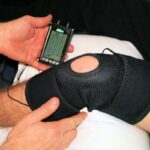Being in pain makes it difficult to go about your daily life. Opioid medications have been the treatment of choice for many people, however, their addictive properties have led to issues, including overdose deaths.
Many patients and their physicians have been looking for other treatment options. There are many methods that do not involve prescription opioid painkillers.
Types of Pain
There are two main types of pain, acute and chronic. Acute pain happens suddenly because of a trigger, either an injury, surgery or the like. It can last for a little bit but goes away.
Chronic pain does not go away. Disease, illness, car crashes, etc., can cause chronic pain. It’s physically debilitating and can last a lifetime. Chronic pain can also lead to anxiety, depression, and other mood disorders.
Non-Opioid Medications
Medications like nonsteroidal anti-inflammatory drugs (NSAIDs) and acetaminophen have shown to be effective in treating common types of pain.
NSAIDs like Ibuprofen, naproxen, and aspirin can control pain, especially acute pain. They’re available over-the-counter. Long-term use can cause stomach and intestinal issues.
Acetaminophen is also available over-the-counter. It is also good for acute pain; however high dosages can lead to liver damage.
Corticosteroids can decrease inflammation and reduce swelling for some pain, both acute and chronic.
Pain-Relieving Procedures
Several types of procedures and injections can help treat pain.
Injections address the source of the pain. Facet joint injections put a small dose of anesthetic and steroid directly into the facet joint to block pain. The facet joints are the joints in your spine that make you able to bend or twist. It might not make the pain go away, but it can help make it tolerable, so you can do physical therapy with the goal of making the pain go away permanently.
Trigger point injections put local anesthetic, saline, or corticosteroid into muscle knots to help relieve pain. Injections into the epidural fluid surrounding the spinal cord can help reduce inflammation and pain. Peripheral nerve blocks inject anesthetic near nerve bundles to block the pain sensation.
Using radio waves to bring heat to nerve tissues can help reduce chronic pain. It’s called radiofrequency ablation and the heat impairs the nerve and disrupts how pain signals go from the spine to the brain. Spinal cord stimulation also masks pain signals by delivering a mild electrical stimulation to nerves along the spinal cord.
Other Treatment Methods
Strengthening the body through physical therapy can also be a pain treatment option. It can not only help a person overcome an injury, but it could also allow a person to resume a regular exercise routine. Exercise releases endorphins which can reduce pain.
Chiropractic and acupuncture treatments can also be effective for reducing pain.
The medical professionals at B3 Medical can help you figure out the best way to treat your pain. We understand what you are going through and want to help you find a way to get back to living the life you want to live. Contact us today for a consultation.



























